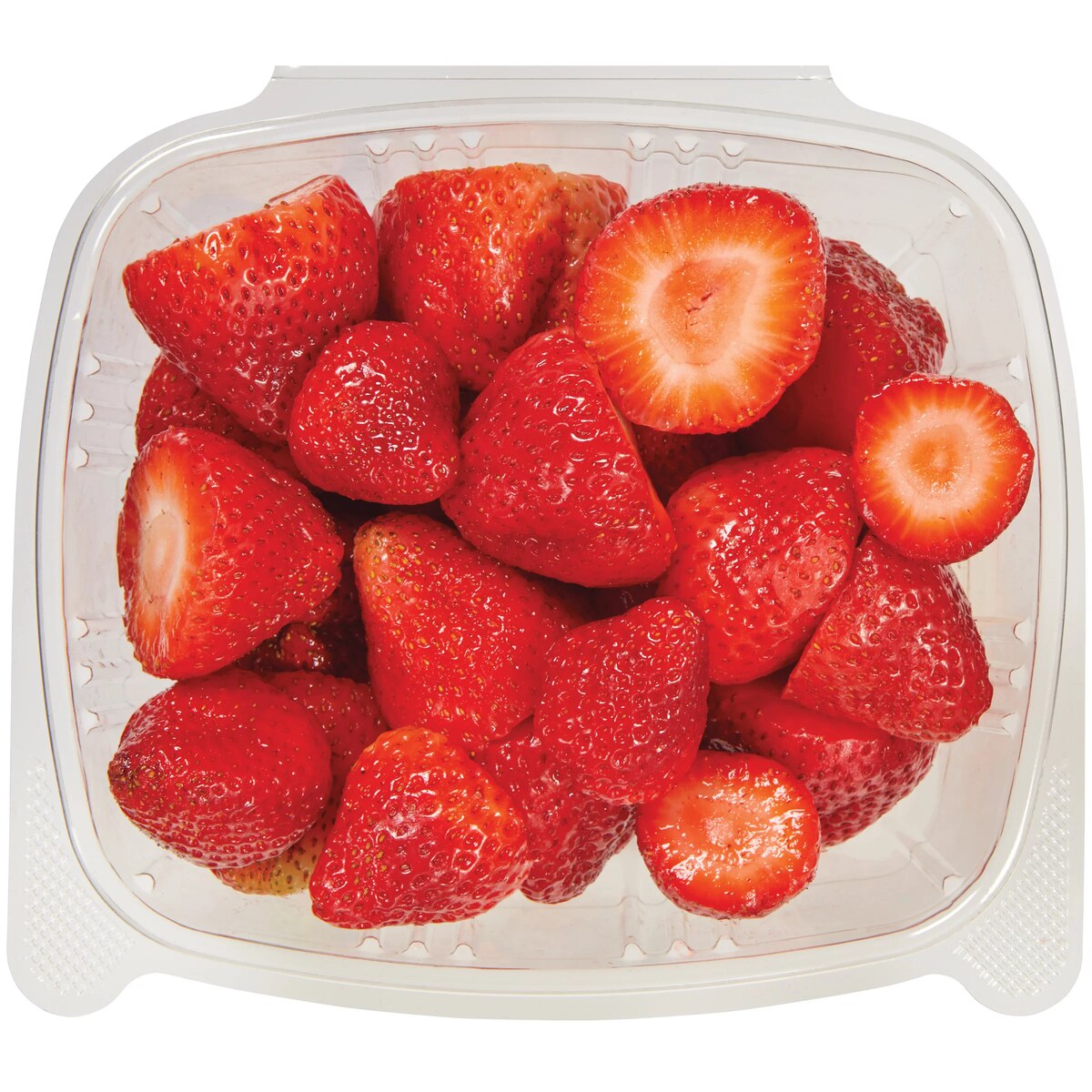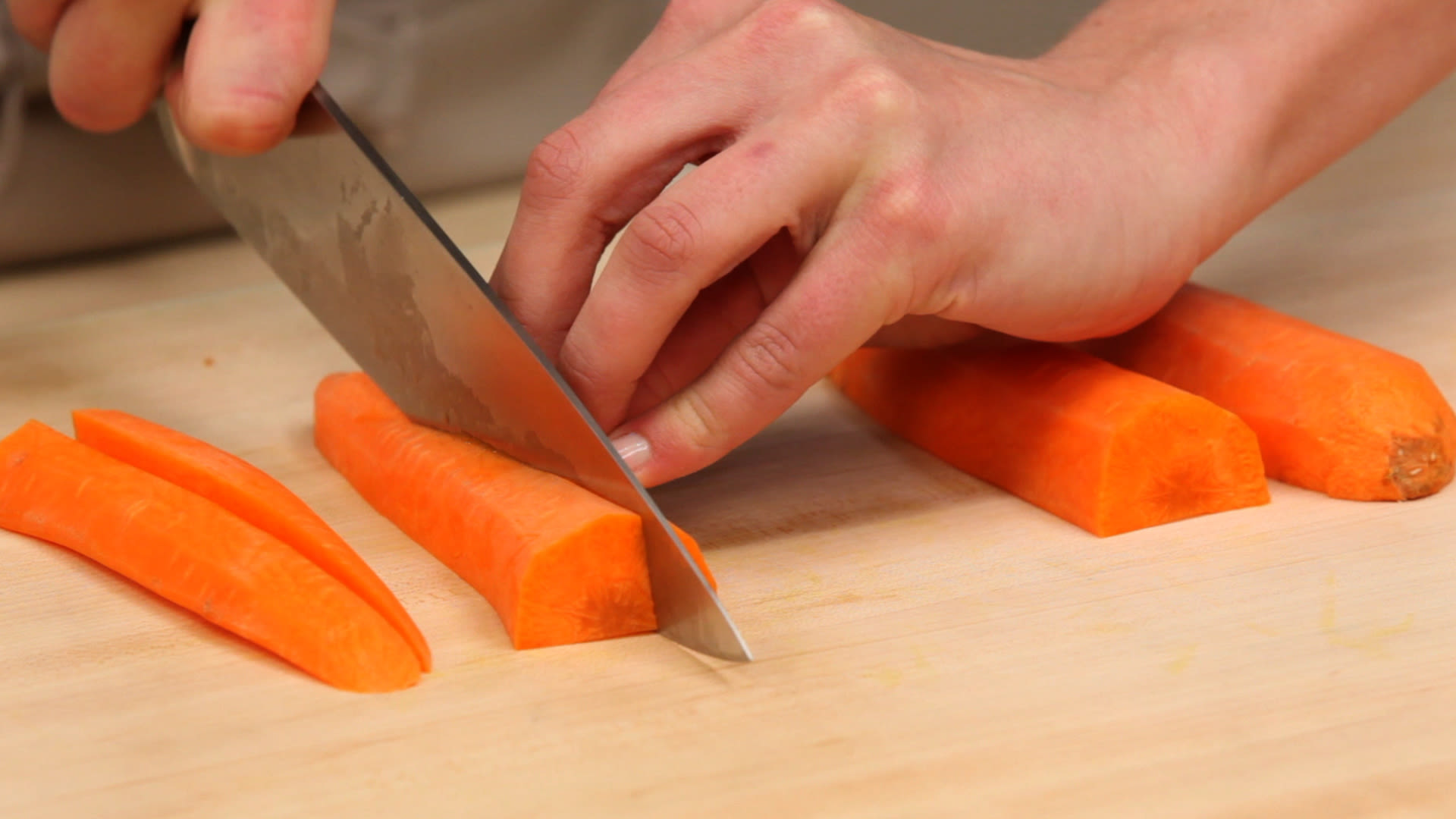Home>Garden Essentials>Garden Plants>How To Chop Thyme


Garden Plants
How To Chop Thyme
Modified: March 1, 2024
Discover the art of chopping thyme with our easy-to-follow guide. Learn how to harvest and use this versatile herb in your plants for maximum flavor.
(Many of the links in this article redirect to a specific reviewed product. Your purchase of these products through affiliate links helps to generate commission for Storables.com, at no extra cost. Learn more)
Introduction
Welcome to the wonderful world of herbs! Among the numerous herbs that grace our culinary adventures, thyme stands out as a versatile and flavorful addition to any dish. Whether you are a seasoned chef or a novice cook, mastering the art of chopping thyme can elevate your cooking skills to new heights. Chopping thyme not only releases its aromatic oils but also enhances its taste, making it a key ingredient in countless recipes.
In this article, we will explore the importance of properly chopping thyme and provide step-by-step instructions on how to do it. We will also share some tips and tricks to help you become a thyme-chopping expert. So, get your cutting board ready, sharpen those knives, and let’s embark on a fragrant and enlightening journey!
Key Takeaways:
- Elevate your culinary skills by mastering the art of chopping thyme. Properly chopped thyme unlocks its full flavor potential, enhances texture, and ensures even distribution in your dishes.
- Whether by hand or using a food processor, chopping thyme is a sensory delight that adds depth to your cooking. Store chopped thyme properly for future use and experiment with different chopping sizes for varied flavor profiles.
Read more: How To Store Chopped Zucchini
The Importance of Properly Chopping Thyme
Properly chopping thyme is essential for unlocking its full flavor potential. When you chop thyme, you help release the essential oils contained within its leaves. These oils carry the distinct aroma and taste that make thyme such a beloved herb.
Chopping thyme also has a practical purpose. Thyme leaves can be quite small and delicate, making it challenging to incorporate them into dishes if they are left whole. By chopping thyme, you create smaller pieces that can be evenly distributed throughout the dish, ensuring a more balanced and consistent flavor profile.
Moreover, properly chopped thyme ensures that the herb is evenly integrated into a recipe’s ingredients, allowing it to infuse its aromatic essence throughout the dish. Imagine biting into a forkful of roasted vegetables, only to encounter an overpowering clump of thyme. By chopping thyme finely and dispersing it evenly, you can avoid such culinary mishaps.
Additionally, by chopping thyme, you can enhance its texture. The small pieces of chopped thyme can add a delightful crunch and texture contrast to your dishes. Whether you’re sprinkling chopped thyme on top of a salad, adding it to a marinade, or sprinkling it on roasted meats, this simple step can elevate the overall dining experience.
Lastly, the act of chopping thyme can be a sensory delight. As you chop the herb, its fragrance intensifies, enveloping your senses and heightening anticipation for the delicious dishes ahead. The process itself can be therapeutic and evoke a connection to nature and the bountiful flavors it offers.
Now that you understand the importance of properly chopping thyme, let’s dive into the steps you need to follow to achieve thyme-chopping perfection.
Step 1: Gathering the Necessary Tools and Ingredients
Before you embark on your thyme-chopping journey, it’s important to gather all the tools and ingredients you’ll need. Having everything prepared and within reach will make the process smoother and more efficient.
Here’s a list of the essential tools and ingredients you’ll need:
- A cutting board: Choose a sturdy cutting board that provides ample space for chopping and is easy to clean.
- A sharp knife: Opt for a sharp chef’s knife or a paring knife. A sharp knife will make it easier to chop the thyme evenly and prevent bruising or crushing the leaves.
- Fresh thyme: Look for fresh thyme sprigs with vibrant green leaves and a strong aroma. Ideally, you want to use fresh thyme to ensure the best flavor and texture.
- A bowl or plate: This will be used to collect the chopped thyme.
Once you have gathered all the necessary tools and ingredients, you are ready to move on to the next step, where we will prepare the thyme for chopping. Remember, having everything at hand will make the process more efficient and enjoyable!
Step 2: Preparing the Thyme for Chopping
Before you start chopping thyme, it’s important to properly prepare the sprigs to ensure optimal results. Follow these steps to prepare the thyme for chopping:
- Inspect the thyme: Take a close look at the thyme sprigs and remove any discolored or wilted leaves. You want to work with fresh, vibrant thyme for the best flavor. Discard any damaged or unusable sprigs.
- Rinse the thyme: Give the thyme sprigs a gentle rinse under cool water to remove any dirt or debris. Thoroughly pat them dry with a paper towel or clean kitchen towel. Moisture on the leaves can affect the chopping process, so make sure the thyme is completely dry before proceeding.
- Remove the leaves from the stem: Hold the thyme sprig at the top and run your fingers along the stem in the opposite direction of growth. This will help loosen the leaves from the stem. If you encounter any stubborn leaves, you can use a fork or the back of a knife to gently scrape them off.
Once you have prepared the thyme, you are ready to move on to the next step: chopping it by hand. Properly preparing the thyme ensures that you are working with clean and intact leaves, ready to be transformed into delightful little pieces of flavor.
Step 3: Chopping Thyme by Hand
Chopping thyme by hand allows you to have more control over the size and texture of the chopped leaves. Follow these steps to chop thyme by hand:
- Gather a small bunch of thyme leaves: Hold a small bunch of thyme leaves, making sure they are tightly enclosed in your hand. This will make it easier to chop them uniformly.
- Position your hand and knife: Hold the knife in your dominant hand and position it perpendicular to the cutting board. Place your other hand on top of the thyme leaves to steady them and prevent them from moving around while you chop.
- Begin chopping: Using a rocking motion, start chopping through the thyme leaves with the knife. Maintain a consistent rhythm so that the leaves are evenly cut with every stroke. Be mindful of your fingers and keep them safely away from the path of the blade.
- Continue chopping until desired consistency: Keep chopping until you reach the desired size and texture of the chopped thyme. If you prefer a finer chop, continue to chop the thyme leaves with a back-and-forth motion until you achieve the desired result.
- Transfer the chopped thyme to a bowl or plate: Once you have finished chopping, transfer the chopped thyme to a bowl or plate. This will make it easier to incorporate into your recipe without any spillage.
Chopping thyme by hand allows you to finely control the texture and size of the leaves. Whether you want larger pieces for added visual appeal or finely chopped thyme for a more subtle presence, the choice is up to you. With practice, you’ll develop your own rhythm and technique that suits your culinary preferences.
Now that you have mastered the art of chopping thyme by hand, let’s explore an alternative method using a food processor or blender in the next step.
When chopping thyme, hold the top of the sprig with one hand and run your fingers down the stem to remove the leaves. Then, gather the leaves and chop finely with a sharp knife.
Read more: How To Chop With A Food Processor
Step 4: Using a Food Processor or Blender for Chopping Thyme
If you’re looking for a faster and more efficient way to chop thyme, using a food processor or blender can be a game-changer. This method works especially well when you need to chop a larger quantity of thyme. Follow these steps to chop thyme using a food processor or blender:
- Add the thyme leaves to the food processor or blender: Remove the leaves from the thyme sprigs and add them to the bowl of the food processor or blender.
- Pulse the thyme: With the lid securely in place, pulse the thyme leaves in short bursts. This will help break down the leaves into smaller pieces without turning them into a puree. Be mindful of not over-pulsing, as this can result in an uneven chop.
- Check for consistency: Pause the pulsing and check the consistency of the chopped thyme. If it’s not finely chopped enough, pulse a few more times until you achieve the desired texture. Remember to avoid over-processing, as this can lead to a loss of flavor and texture.
- Transfer the chopped thyme to a bowl or plate: Once you’re satisfied with the chopped thyme consistency, transfer it to a bowl or plate. This will make it easier to measure and incorporate into your recipes.
This method is quick, efficient, and provides a consistent texture for the chopped thyme. It’s particularly useful when you need a large quantity of evenly chopped thyme or if you prefer a more uniform texture for your dishes.
Now that you know how to chop thyme using a food processor or blender, let’s move on to the final step: storing the chopped thyme for future use.
Step 5: Storing Chopped Thyme for Future Use
After you have successfully chopped your thyme, it’s important to store it properly to maintain its freshness and flavor for future use. Follow these steps to store chopped thyme:
- Transfer the chopped thyme to an airtight container: Place the chopped thyme into a clean, airtight container. This can be a small jar, a plastic container with a tight-fitting lid, or even a resealable plastic bag. Ensure that the container is clean and dry before use.
- Label the container: It’s a good practice to label the container with the date of chopping to keep track of its freshness. This will come in handy when you need to use the chopped thyme in the future.
- Store in the refrigerator or freezer: Place the container of chopped thyme in either the refrigerator or freezer, depending on your needs. Chopped thyme can be stored in the refrigerator for up to one week, while in the freezer, it can last for several months.
- Thawing frozen chopped thyme: If you have stored the chopped thyme in the freezer, make sure to thaw it before use. Simply remove the container from the freezer and let it thaw in the refrigerator. Avoid thawing it at room temperature to prevent potential bacterial growth.
By storing chopped thyme properly, you can enjoy its fresh flavor even when it’s not in season. Whether you’re using it in soups, stews, sauces, or marinades, having chopped thyme readily available can save you time and effort in the kitchen.
Now that you have learned how to store chopped thyme, let’s explore some tips and tricks to enhance your thyme-chopping experience.
Tips and Tricks for Chopping Thyme
Here are some useful tips and tricks to elevate your thyme-chopping skills:
- Keep your knives sharp: Using a sharp knife will make chopping thyme easier and more precise, allowing you to achieve cleaner cuts and avoid crushing the delicate leaves.
- Use a rocking motion: When chopping thyme by hand, adopt a rocking motion with your knife to ensure consistent cuts. This technique helps maintain control and prevents uneven chopping.
- Chop only what you need: It’s best to chop thyme just before you plan to use it. This helps retain its freshness, flavor, and aroma. Chopped thyme can lose its potency over time, so it’s ideal to chop it as close to cooking time as possible.
- Experiment with different chopping sizes: Depending on the recipe and your personal preference, you can vary the size of the chopped thyme. Finely chop it for subtle flavor or leave it slightly larger for a bolder presence.
- Consider using a herb stripper: If you find it difficult to remove the leaves from the thyme sprigs by hand, consider using a herb stripper. This handy tool quickly removes the leaves from the stem, making the preparation process faster and more efficient.
- Don’t be afraid to mix herbs: Thyme pairs well with a variety of other herbs, so feel free to combine it with rosemary, oregano, or basil for a flavorful herb blend. Chopping these herbs together can save you time and add complexity to your recipes.
- Dry thyme without chopping: If you have an abundance of fresh thyme and want to store it for a longer period, consider drying it without chopping. Hang bundles of thyme in a cool, dry place until they become brittle. Then, strip the dried leaves and store them in an airtight container.
Remember, practice makes perfect when it comes to chopping thyme. With time and experience, you’ll develop your own techniques and preferences for chopping this fragrant herb.
Now that you’re armed with these tips and tricks, you’re ready to embark on your thyme-chopping adventures in the kitchen!
Conclusion
Congratulations! You’ve reached the end of our comprehensive guide on how to chop thyme. By now, you should feel confident in your ability to handle this versatile and aromatic herb with ease.
We explored the importance of properly chopping thyme to unlock its full flavor potential and enhance its texture. Whether you choose to chop thyme by hand or use a food processor or blender, the choice is yours based on the time and texture you prefer.
Remember to gather the necessary tools and ingredients before you start, and take the time to properly prepare the thyme by removing any damaged leaves. Additionally, be sure to store your freshly chopped thyme in an airtight container in the refrigerator or freezer to keep it fresh for future use.
Throughout the process, we shared some helpful tips and tricks to elevate your thyme-chopping skills. From using a sharp knife and employing a rocking motion to experimenting with different chopping sizes and mixing herbs, these techniques will surely take your culinary creations to the next level.
So, next time you’re preparing a delicious meal, don’t forget to include freshly chopped thyme for that extra burst of flavor and fragrance.
Whether you’re making a hearty stew, a savory sauce, or a fragrant marinade, chopping thyme will enhance the taste and aroma of your dishes. Have fun exploring different recipes and experimenting with the versatility of this wonderful herb!
Now that you’re equipped with the knowledge and know-how, it’s time to put it into practice. So, sharpen your knives, gather your thyme, and let the chopping begin!
Frequently Asked Questions about How To Chop Thyme
Was this page helpful?
At Storables.com, we guarantee accurate and reliable information. Our content, validated by Expert Board Contributors, is crafted following stringent Editorial Policies. We're committed to providing you with well-researched, expert-backed insights for all your informational needs.















0 thoughts on “How To Chop Thyme”